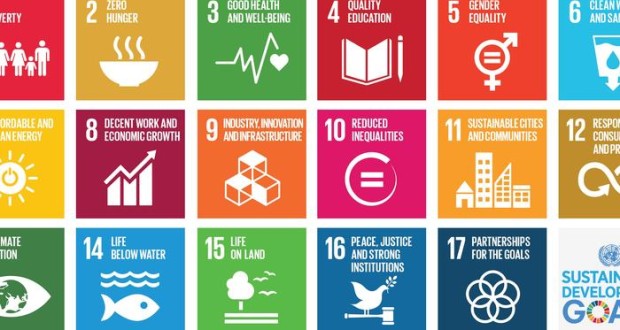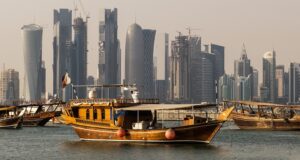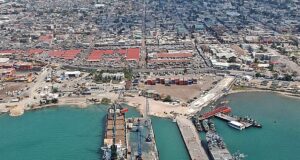December 10th, 2015
By Marta Luzes – Research Assistant
Download as PDF.
Introduction
With the 2015 deadline for the Millennium Development Goals (MDG’s) fast approaching, the United Nations (UN) agreed in September on the post-2015 Development agenda, a new set of targets that will be called the Sustainable Development Goals (SDG’s). At the turn of the millennium the UN vowed to adopt this agenda so that it could expand the fruits of the global economy to end extreme poverty and improve millions of lives. Adopted at the Millennium Summit in 2000, the MDGs set out a global roadmap for a future of equality and justice. The agenda was built on past agreements and resolutions of world conferences and summits organized by the United Nations during the preceding decade. The values were translated into eight goals (MDG’s) that aim to address the most critical challenges facing economic and social development worldwide, such as extreme poverty and hunger worldwide. The targets, constrained by a fifteen year timeline, focused on challenges such as universal primary schooling, high child mortality rates and women empowerment, amongst others. These set of goals provided basis guidelines for the elaboration and implementation of some economic and social policies in the last fifteen years, however its results show insufficient and uneven progress.
As this agenda comes to an end there are still plenty of unfinished goals that will need to be addressed in the years to come. Targets that encouraged high enrolment rates have failed to address the importance of attendance and completion rates. As a result these rates have stagnated at around 73% from 2000 to 2011[1], which clearly shows that not all children complete primary education, as these goals set out to accomplish. A similar problem occurred during the implementation of the 3rd goal: promotion of gender equality and women empowerment. Since the target only examined school enrolment it overlooked the discrimination women still face in other areas of society, such as in access to the job market or public and private decision-making[2]. Notwithstanding these shortcomings, the MDG’s still had considerable successes in some key areas: extreme poverty was halved by 2010 as was the percentage of undernourished people since 1990; primary education enrolment in developing regions climbed to 91% in 2015; the global under-five mortality rate has declined by more than half between 1990 and 2015 and last but not least, HIV infections fell by approximately 40% between 2000 and 2013[3].
The SDG’s, composed by 17 goals, bring new changes and challenges. What remains to be seen is how these targets will be transformed into practical measures and how they will lead a global transformation during the next fifteen years. This brief focuses on the global efforts to eradicate poverty and hunger and tries to assess to what extent the policies were sufficiently put into place by the MDG’s. It explores the potential that this new set of goals has to overcome the pitfalls the MDG’s faced and it reflects on the challenges that lay ahead of the new development agenda.
Drawbacks and limitations of the MDG’s
The Millennium Development Agenda’s main drawback was the inability to target the underlying social, political and economic problems that produced the symptoms it was trying to eradicate. This is evident from the MDG’s targets and their contradictory results, specifically in the case for poverty and hunger. Instead of engaging with the socio-political roots, most targets are limited by a general approach of the issue. In 1990 nearly half of the population in developing countries lived on less than 1,25$ a day, thus one of the priorities of the MDG’s was to reverse the situation. Therefore MDG 1 was arguably the most crucial target in the millennium agenda. Poverty and its consequences affect most human development indicators, from health to education, and its eradication was, and still is, one of the greatest global challenges of our century. Despite having met the 2015 deadline five years ahead of time[4], there are still several countries in regions such as sub-Saharan Africa, which have made little improvements compared with the rest of the world. The target (MDG 1) was one of the few that was formally met, however the indicator says little about the levels of poverty worldwide. Instead of focusing on poverty eradication, policies tend to develop around poverty alleviation measures. Most policies favour strategies that aim to place marginalized people over the ‘1,25$ a day’ threshold, instead of creating sustainable long-term measures that would encourage people to significantly improve their lives. While short-term goal oriented policies follow the MDG’s targets, they ignore the multi-faceted nature of poverty: it does not recognize that poverty is multi-dimensional, excluding other important measures such as access to education, health support and so on. There is a pressing need for the SDG’s to include a holistic vision of poverty so that policies can have stronger long-term results.
Another target present in the first goal was to diminish the proportion of undernourished people around the world. This target also had uneven results in some Sub-Saharan African countries, such as Central African Republic and Kenya where poverty rates increased in the past 15 years[5]. Most countries were committed to increase the national spending on social protection in order to create policies that focused on the social protection of marginalised citizens. These policies, meant to diminish poverty and undernourishment, followed the MDG’s guidelines for development and generally consisted of workfare programs and other social nets[6].
Examples of such programs are: In-kind transfers, such as school feeding programs, are a common social assistance method that it is often used in the developing world. The Indian Midday Meal Scheme, a school feeding program designed and implemented by the national government, supplies daily free lunches for children attending public schools[7]. The program, that feeds around 120 million children daily, intends to improve children’s nutrition at the same time that it works as an incentive for school attendance. The Conditional Cash Transference is another program that was developed amidst the MDG’s time frame. The Brazilian project, Bolsa Familia, was created as a conditional social net for the country’s disadvantage population. It is one of the biggest conditional cash transfer schemes in the world and it has contributed to the reduction of national poverty rates from 42,7% to 28,8% (from 2003 to 2010). The delivery of the cash transfer is dependent on the family’s children attendance to school and on their full vaccination[8]. This way, the project addresses not only poverty but also education centred issues, contributing to a multi-dimensional improvement of people’s lives. While these types of social policies promote dependency on the state, they tend to be limited on the aid provided by international donors. Additionally, low accountability and high rates of corruption (issues that were not addressed by the MDG’s), are responsible for the underperformance of several of these programs. Most of these policies are not sustainable in the long run and there is a growing awareness of this limitation in the new global agenda. Half of the world’s people suffering from hunger belong to smallholder farming communities that are very vulnerable to setbacks such as natural disasters and land grabs[9]. Furthermore, despite being the world’s primary food producers, women are the ones that suffer the most from poverty and hunger. Unlike the MDG’s, the SDG’s recognize the success of policies that focus on small-scale food producers and their secure access to land, policies that promote the empowerment of women in farming initiatives. This recognition encourages governments to further include the above challenges in their national policies and social programmes, permitting a growing independence from the population as they become empowered and self-sufficient.
The United Nations agenda faced some pitfalls that became clearer as the years passed and policies were implemented. It ignored the full dimensions of poverty, elaborating policies that tried to address consequences and not causes and it neglected one of the most urgent issues: a growing inequality between countries. Also, the general nature of the goals allowed different national entities to appropriate them as they pleased, often drafting policies that produced no positive outcome. Facing these challenges is crucial to the new strategy that was launched by the Sustainable Development Goals.
“Leave no one behind”[10]
In an effort to break the trend of top-down policy decisions and implementation, the SDG’s elaboration also counted with local surveys[11] and international dialogue with marginalised people in an attempt to introduce a greater participatory approach. The post-2015 agenda, which can be applied equally to the North and South, includes targets that promote social, economic and environmental sustainability, relying on an encompassing strategy. The goals are more inclusive, more universal and most importantly they recognise the multi-dimensional character (economic, social and political) of poverty and marginalisation. Nevertheless there are still gaps and inconsistences that need to be overcome by both national entities and civil societies.
The main target of the new agenda remains the elimination of poverty and hunger (SDG’s 1 and 2) however, contrary to the former focus of the MDG’s, the target expanded its measures of poverty, not relying on a single income indicator but also addressing important economic and social structural problems. The agenda clearly states that there is an urgency to “reduce at least by half the proportion of men, women and children of all ages living in poverty in all its dimensions according to national definitions”[12]. It further advocates for the need to put into place social protection policies that cover the vulnerable.
The recognition that problems such as land ownership and unequal access to economic resources are great contributors to hunger and poverty is an important step in the post-2015 agenda. Also, the focus on productivity of rural communities and on sustainability of food production shows that there is a greater weight given to communities and indigenous representation. Still, there is no mention of issues such as land grabs by corporations and governments, problems that affect several people living in the developing world. Additionally, despite acknowledging that the private sector bears great potential towards contributing to social and economical development, the goals do not challenge some set rules and financial injustices that characterize a part of the corporate world. The targets avoid issues such as the need to regulate financial markets, the reality of corporate tax evasion or the unfair bilateral trade deals such as the Trans-Pacific Partnership and consequences it will have for developing countries.
The SDG’s focus on inequality, present in the 10th and 12th goals, show a step forward in recognizing that a sustainable approach to poverty cannot be one of poverty alleviation, but on the other hand one that fights inequalities on all levels offering all human beings equal and just opportunities. This recognition displays the relevance of the SDG’s for developing countries as well as for developed ones. According to Oxfam by 2016 the combined wealth of the richest 1% will be greater than that of the other 99%[13] and, even though there is not an exact consensus on these percentages[14], there is a pressing need to look at rising inequality. These targets highlight the importance of sustainable consumption, of ensuring equal opportunities for everyone by eliminating discriminatory laws and policies. By highlighting the need to promote more equal societies, in which fiscal and social policies should be put into place to prevent inequalities the SDG’s open up a new road for governments and private companies to work together on a shared sustainable future in which there is a need to foster economic development in underdeveloped countries and also to ensure that the developed world follows a more balanced path into the future. Another issue that is worth mentioning is the SDG’s acknowledgement of the consequences conflict and war has on the lives of millions around the globe. The 16th goal “promote peaceful and inclusive societies for sustainable development, provide access to justice for all and build effective, accountable and inclusive institutions at all levels” recognizes the importance of peace for development and opens up a new possibility for policy makers[15]. The target stresses the importance of reducing all kinds of violence, of ending abuse and exploitation and puts conflict and insecurity as one of the main obstacles to social and economic development.
The differences between the MDG’s and the SDG’s are easy to spot. The new agenda puts forward more concise and far-reaching goals. It attempts to address some more structural problems of society, it recognizes the importance and risks of economic development and it aims to construct a road to the future that is more equitable and sustainable than the one that was followed for the past 15 years. Nevertheless, the road ahead is not without challenges, and it will be interesting to see how the new goals will be appropriated and translated into policies.
Conclusion and policy recommendations
Building on the MDG’s, the new set of goals reaches further and deeper than its predecessor. Policy design that is already in place will be very useful for the formulation of the new set of targets; nevertheless the scope of decisions and the amount of areas concerned will increase substantially. This is mainly due to the new multi-dimensional view of each goal, a view that realises the interlace of social, political and economic issues, and shows a clear red line throughout the SDG’s, bearing great potential for international agents to coordinate.
Therefore, one of the best and more feasible policy recommendations would be for the international agents to integrate this paradigm into policy making. This would mean not only cross-sector elaboration of policies, taking into account the synergies that can be created but also being aware of the negative impacts that some policies have on seemingly unrelated fields, but also cross sector evaluation of policies. Additionally, this comprehensive approach presents opportunities for greater civil society engagement with governments and NGO’s.
The post-2015 agenda allows governments to adapt most targets and objectives into their national programmes and policies. This opportunity, however, should be taken alongside a greater effort to embed accountability into national and regional mechanisms. These mechanisms should focus on a rigorous and participatory assessment of policy outcomes. By decentralising accountability it becomes easier for countries to track their own improvements and to shape policies to current national needs and gaps.
One of the critiques to the MDG’s was that the overly general nature of the goals made it hard for the results to be assessed, something that can be overcome by the current elaboration of the SDG’s. Additionally, it is important to bear in mind that the SDG’s limitation should be regarded as an opportunity and not as a setback. The fact that the post-2015 agenda does not cover issues such as corruption should not mean the exclusion of these problems from the international arena or national policies. It should, on the contrary, be seen as a possibility to tackle these issues in an all-encompassing way, considering them across sectors and in policy decisions.
The last goal of both the MDG’s and the SDG’s has not changed much: it pleads for a global partnership of development and policy coordination between agents so that results can resonate globally. The goal acknowledges the importance that policy coherence throughout countries has in advancing a powerful and balanced strategy that promotes great advances towards a sustainable development. This goal was as important fifteen years ago as it will be in the future. As the United Nations Climate Change Conference (happening throughout December in Paris) proved, there is more than ever a need for countries to enter in dialogue, to find mutual agreement on global measures and to move forward together. This challenge is not only in the hands of governments worldwide, but also at the hands of each one of us as we commit to contribute to a better and safer world.
[1] Sánchez, M. Julca, A. Winkel, J. (2015) “Social Policies During the MDG Period: Lessons and Implications for Post-2015” by The United Nations Department of Economic and Social Affairs Development Policy and Analysis Division
[2] United Nations News Desk [LINK]
[3] United Nations News Desk [LINK]
[4] United Nations News Desk [LINK]
[5] UNDP (2015) “MDG Report 2015: Assessing Progress in Africa toward the Millennium Development Goals” [LINK]
[6] Sánchez, M. Julca, A. Winkel, J. (2015) “Social Policies During the MDG Period: Lessons and Implications for Post-2015” by The United Nations Department of Economic and Social Affairs Development Policy and Analysis Division
[7] Guardian, 11th August 2014. [LINK]
[8] Guardian, 19th November 2010. [LINK]
[10] United Nations, 14th December 2014. [LINK]
[11] United Nations Development Group (2013) “A Million Voices: The World We Want” [LINK]
[12] United Nations News Desk [LINK]
[13] Oxfam, 19th January 2015. [LINK]
[14] VOX, 22nd January,2015. [LINK]
[15] Woollard, C. (2013) “Peace in the Post-2015 Development Goals”, Journal of Peacebuilding & Development, 8:1, 84-89.
 Human Security Centre Human Rights and International Security Research
Human Security Centre Human Rights and International Security Research




